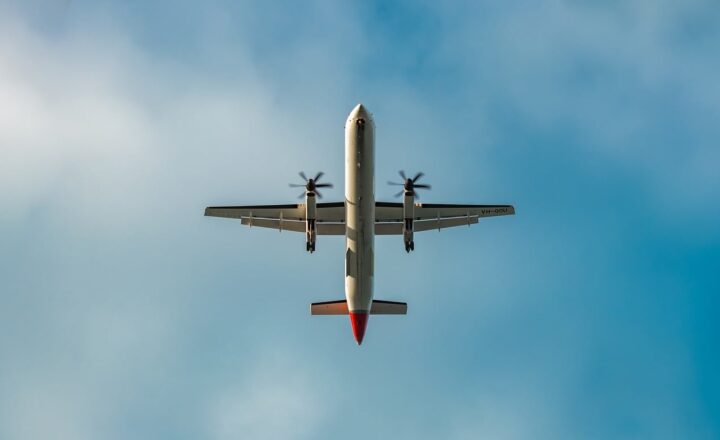What’s Inside an Airplane’s Black Box and How It Helps Solve Crash Mysteries
November 11, 2024

When it comes to air travel, safety is paramount. One of the vital tools in ensuring that safety is maintained and improved is the airplane’s black box. Although often misunderstood, these crucial devices play a key role in accident investigations, revealing the intricate details about what happened during the flight. This article delves deep into what a black box is, what information it contains, and how it aids investigators in solving crash mysteries.
1. What is a Black Box?
The term “black box” is somewhat misleading. In reality, these devices are bright orange or yellow, designed for high visibility to make them easier to find after a crash. Officially known as Flight Data Recorders (FDR) and Cockpit Voice Recorders (CVR), black boxes are crucial for flight safety.
Black boxes serve two essential purposes:
- Flight Data Recorders (FDR): These devices continuously record a multitude of parameters related to the aircraft’s performance, such as altitude, speed, and heading, along with the positions of the control surfaces.
- Cockpit Voice Recorders (CVR): CVRs capture all sounds in the cockpit, including pilot conversations, communications with air traffic control, and any alarms that sounded during the flight.
The data collected by both devices is crucial for understanding the events leading up to an incident, allowing investigators to reconstruct the final moments of a flight.
2. What Information is Recorded?
The black box contains a wealth of crucial information.
2.1 Flight Data Recorder (FDR)
The FDR captures significant parameters, typically the following:
- Altitude: The height of the aircraft above sea level.
- Airspeed: The speed of the aircraft relative to the speed of air around it.
- Heading: The direction the plane is facing.
- Vertical acceleration: Changes in the vertical movement of the aircraft.
- Control surface positions: Data on the position and movement of ailerons, elevators, and rudders.
- Engine performance data: Information related to fuel flow, temperature, and RPM.
2.2 Cockpit Voice Recorder (CVR)
The CVR is designed to hold up to two hours of recording, capturing vital details such as:
- Pilot conversations: Interactions between pilots, including instructions related to the flight’s operation.
- Air traffic control communications: Recordings of interactions between pilots and air traffic controllers during the flight.
- Ambient sounds: Background noises like alarms, engine sounds, and other relevant cockpit audio.
These components work together to provide investigators with an accurate picture of the series of events leading up to an aircraft accident.
3. How Do Black Boxes Aid in Investigations?
The data retrieved from black boxes is essential in resolving the mysteries surrounding aircraft accidents. Let’s explore how this information is utilized throughout the investigation process:
3.1 Accident Reconstruction
Black boxes provide raw data that helps investigators recreate the flight path of the aircraft right up until the crash. This information is fundamental in understanding the aircraft’s speed, altitude, and any sudden changes in direction, revealing critical details surrounding the flight’s final moments.
3.2 Identifying Human Error
Analyzing cockpit recordings allows investigators to evaluate the decision-making process of the flight crew. It may reveal critical moments of potential human error, miscommunication, or compliance with standard operating procedures. By understanding these factors, airlines and regulatory bodies can implement necessary training or alterations in protocol.
3.3 Technical Failures
Data gathered from the FDR can point towards mechanical issues, revealing failures in any number of systems, such as engines or navigation equipment. This information proves pivotal in assessing whether technical faults contributed to the crash.
3.4 Recommendations for Future Safety
Once the cause of the accident is determined, findings from the black box data are typically used to recommend procedures or design changes to enhance safety. This can lead to improvements in training, maintenance, and aircraft design, ultimately making air travel safer.
4. The Technology Behind Black Boxes
Black boxes are engineered to withstand the harshest conditions. They are built to survive extreme temperatures, high-impact forces, and even being submerged in water. Here’s a look at the technology:
4.1 Durability and Protection
Black boxes are encapsulated in strong, impact-resistant materials that can tolerate impacts of up to 3,400 Gs and temperatures as high as 1,000 degrees Celsius. This robust casing is crucial for the preservation of data after an accident.
4.2 Underwater Locator Beacons (ULB)
Most black boxes are equipped with a ULB that activates upon submersion in water, emitting signals for up to 30 days. This feature greatly aids in locating the black box in ocean or lake recoveries, where visibility is poor.
4.3 Data Storage
Modern black boxes utilize solid-state technology that offers higher capacity and greater reliability than older magnetic data storage systems. This allows them to record more parameters with fidelity, enhancing the quality of data available for investigations.
5. Conclusion: The Importance of Black Boxes in Aviation Safety
The quest for aviation safety continually advances thanks in part to black boxes. By unveiling the mysteries of air travel incidents, these devices enhance our understanding of flight dynamics and human operations under pressure. The data derived from these bright orange boxes serves as a foundation for developing strategies that improve airline safety standards worldwide. Aircraft black boxes turn tragic events into learning opportunities that ultimately save lives.
Whether it’s mining crucial data after a serious incident or enhancing training protocols for pilots, the role of black boxes is indispensable in the world of aviation. As technology continues to evolve, so will the tools and methodologies used to ensure that air travel remains one of the safest modes of transportation available today.








